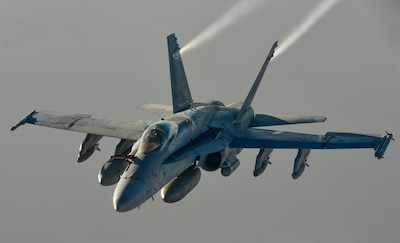By Lisa Ferdinando DoD News, Defense Media Activity
WASHINGTON, Nov. 9, 2017 — Top aviation military officials
from the four services addressed Congress today on aviation readiness, all
underscoring the urgent need for predictable budgets.
Army Maj. Gen. William K. Gayler, commanding general of the
U.S. Army Aviation Center of Excellence and of Fort Rucker, Alabama; Lt. Gen.
Mark C. Nowland, Air Force deputy chief of staff for operations; Lt. Gen.
Steven R. Rudder, Marine Corps deputy commandant for aviation; and Navy Vice
Adm. Mike Shoemaker, commander of Naval Air Forces, spoke on aviation readiness
at a hearing of the House Armed Services Committee's readiness subcommittee.
"Every hour of every day, airmen support homeland
defense, deter aggression from abroad and provide a robust and reliable nuclear
deterrent," Nowland said.
However, the Air Force is quickly approaching an inflection
point, he said, noting that 26 years of continuous operations have taken a toll
on the force and adversaries are beginning to close the technological gap. The
president's budget for fiscal year 2018, he added, lays the foundation to restore
readiness and increase joint lethality.
"But most importantly an approved budget with stable,
predictable funding levels will build the bridge to the future," he said.
"Continuing resolutions and a return to the Budget Control Act measures
reverse all the progress we've made to this point."
Army
Gayler said Army Aviation has provided an "unparalleled
advantage" to the nation as a fundamental element of the joint force.
"There's no doubt that aviation will remain an essential element of any
combat in the future," he said.
Army Aviation units and soldiers have been tested routinely
in a variety of harsh operational environments over the past 16 years and
through it all, have performed magnificently, Gayler said.
"However," he added, "force structure
reductions, increased global requirements, funding uncertainty and the
requirement to train our forces to a higher level of preparedness raise
concerns about the overall future readiness of Army Aviation."
Challenges in Naval Air
Consistent, predictable funding is "absolutely
required" to improve readiness and quality of service in naval aviation,
Shoemaker said. "Then we must buy back the readiness we've lost from years
of resource-constrained budgets."
To illustrate the challenges, he discussed the deployments
of West Coast-based aircraft carriers.
"We are meeting the combatant commanders' requirement
for ready, lethal carriers and air wings forward, but at a tremendous cost to
the readiness of our forces at home," he said.
He described a "shell game" in moving various jets
to equip the USS Carl Vinson, USS Nimitz and USS Theodore Roosevelt for their
deployments this year. Once those jets are moved, nondeployed squadrons are
left without an adequate number of assets to keep the aviators proficient and
progressing toward career qualifications, he explained.
That has detrimental impacts on retention and experience
levels, he said. In addition, parts had to be cannibalized from other jets, and
hundreds of sailors had to be temporarily reassigned or have their sea duty
extended.
Nation's Expeditionary Force in Readiness
Marine aviation readiness is improving, but fragile, Rudder
saidThe readiness recovery of the Marine Corps lies in modernization and
repair, he told the panel. He reiterated the need for consistent funding, and
he highlighted the work of the men and women of the force who serve around the
globe.
"The Marine Corps continues to be the nation's
expeditionary force in readiness, and Marine Aviation is prepared to surge and
fight wherever you ask them to," Rudder said.









No comments:
Post a Comment